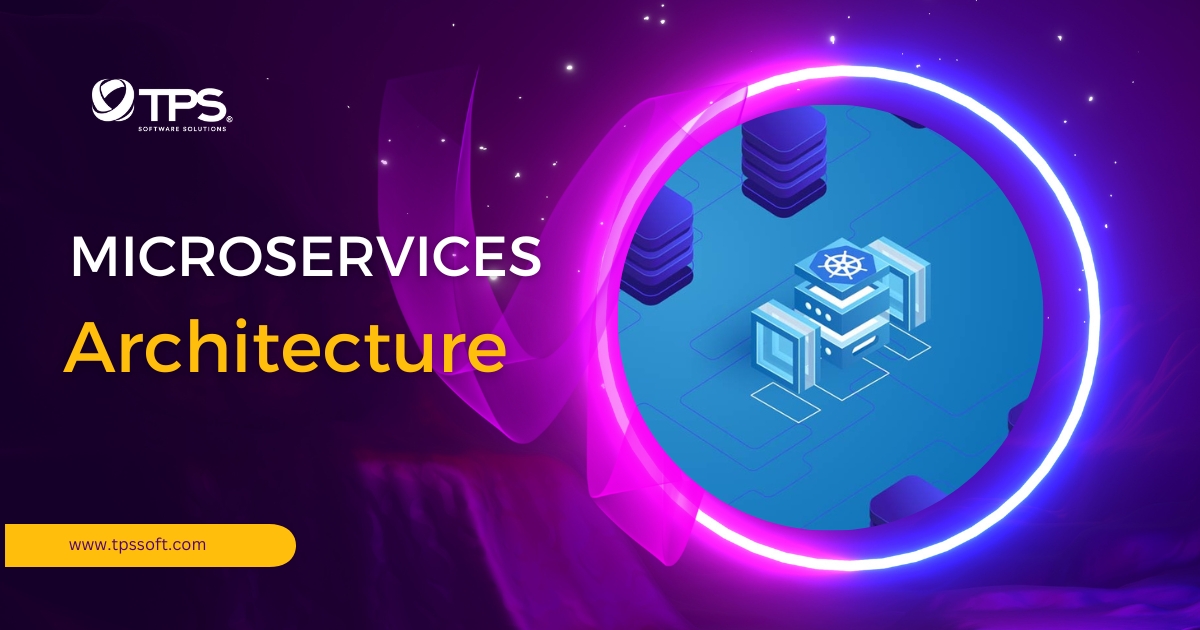Introduction
In today’s rapidly evolving digital landscape, businesses are constantly striving to deliver software solutions that are not only scalable but also highly adaptable to changing market demands. This has led to the growing popularity of microservices architecture, an innovative approach that allows organizations to develop and deploy software applications with enhanced scalability and agility. In this article, we will explore the benefits of microservices architecture and its role in driving scalable and agile software development.
What is Microservices Architecture?
Microservices architecture is a software development approach that structures an application as a collection of small, independent services. Instead of building a large, monolithic application, microservices break down the system into multiple modular components, each responsible for a specific business capability or function. These services communicate with each other through lightweight mechanisms, typically APIs (Application Programming Interfaces).
Each microservice operates as a separate entity, running in its own process or container and can be developed, deployed, and scaled independently of other services. This decoupling allows development teams to work on different services concurrently, enabling faster development cycles and promoting agile development practices.
Unlike traditional monolithic applications, where a single codebase and database handle all functionalities, microservices have their own dedicated databases and can use different technologies and programming languages. This flexibility allows organizations to choose the most suitable technology stack for each microservice, depending on its specific requirements, rather than being restricted to a single technology.
Microservices architecture promotes loose coupling between services, meaning that changes in one service do not have a significant impact on others. This enables teams to make updates, add new features, or fix issues in one service without affecting the entire system. It also allows for better fault isolation, where failures or issues in one microservice are contained within that service, minimizing the impact on the overall application’s functionality and performance.
By adopting microservices architecture, organizations can achieve several benefits, including enhanced scalability, agility, flexibility, and resilience. The modular nature of microservices enables easy scaling of specific services to handle increased load, facilitates rapid development and deployment of new features, and supports continuous improvement and innovation. Additionally, microservices architecture allows organizations to leverage diverse technology stacks and integrate third-party services seamlessly, enabling them to adapt to changing business requirements and stay competitive in the dynamic digital landscape.

Benefits of Microservices Architecture
Microservices architecture offers numerous benefits for organizations developing software applications. Here are some of the key advantages:
1. Scalability:
Microservices architecture enables organizations to achieve enhanced scalability. By breaking down an application into smaller, independent services, each service can be scaled individually based on its specific requirements. This modular approach allows organizations to allocate computing resources more efficiently, ensuring optimal performance even under heavy workloads. Scaling specific services without impacting the entire application results in improved responsiveness and user experiences.
2. Agility and Faster Time-to-Market:
Microservices architecture promotes an agile development approach, allowing teams to work on different services concurrently. This distributed development approach reduces dependencies and bottlenecks, enabling faster development cycles and shorter time-to-market for new features and updates. Microservices facilitate continuous deployment and integration, allowing for faster iterations, frequent releases, and rapid response to customer feedback. This agility is crucial in highly competitive markets where speed and innovation are essential.
3. Flexibility and Technology Diversity:
Microservices architecture provides organizations with the flexibility to choose the most suitable technology stack for each service. Since each service operates independently, organizations can select different programming languages, frameworks, and databases based on the specific requirements of each service. This flexibility empowers organizations to adopt new technologies, experiment with different tools, and integrate third-party services seamlessly, without impacting the entire application. It also facilitates easier adoption of emerging technologies and market trends.
4. Fault Isolation and Resilience:
In a microservices architecture, if one service fails or encounters issues, it doesn’t bring down the entire system. The decoupled nature of microservices ensures fault isolation, where failures are contained within specific services, minimizing the impact on the overall application. This isolation enhances the robustness and reliability of the system, as failures in one service do not cascade to others. It also simplifies troubleshooting and debugging, making it easier to identify and resolve issues quickly.
5. Improved Team Productivity:
Microservices architecture promotes smaller, focused teams responsible for individual services. This division of labor allows teams to have a deep understanding of their services, leading to better productivity and ownership. Developers can work on specific services independently, making it easier to develop, test, deploy, and maintain them. Smaller codebases and clear service boundaries simplify the development process and reduce the complexity associated with large monolithic applications.
6. Scalable Development and Deployment:
Microservices architecture allows organizations to scale their development and deployment processes. With smaller, loosely coupled services, teams can work independently, developing, testing, and deploying services in parallel. This scalability helps organizations effectively manage larger development projects, allocate resources efficiently, and respond quickly to changing business needs.
Implementing Microservices Architecture
Implementing microservices architecture involves several considerations and steps. Here is a general outline of the implementation process:
1. Identify Suitable Applications:
Determine which applications within your organization would benefit from microservices architecture. Consider applications that are complex, require scalability, have varying functional requirements, or need independent deployment and scaling.
2. Define Service Boundaries:
Analyze the application’s functionality and identify logical boundaries for dividing it into microservices. Each microservice should have a specific business capability and perform a well-defined function. Clearly define the responsibilities and interfaces of each microservice.
3. Design Communication Mechanisms:
Decide on the communication mechanisms between microservices. The most common approach is to use lightweight APIs such as RESTful APIs or message queues. Establish clear protocols and standards for inter-service communication, including data formats, authentication, and error handling.
4. Choose Suitable Technologies:
Select appropriate technologies for implementing each microservice based on its specific requirements. Consider programming languages, frameworks, databases, and other tools. Aim for technology diversity to leverage the best options for each service while ensuring interoperability.
5. Ensure Data Consistency:
Determine how data will be managed and synchronized across microservices. Depending on the application, you may choose between maintaining separate databases for each microservice, implementing event-driven architectures, or employing distributed data management strategies like distributed transactions or eventual consistency.
6. Establish Deployment and Orchestration:
Set up a robust deployment and orchestration system to manage the lifecycle of microservices. Use containerization technologies like Docker or Kubernetes to package and deploy microservices. Implement continuous integration and continuous deployment (CI/CD) practices to automate the build, test, and deployment processes.
7. Implement Monitoring and Observability:
Establish monitoring and observability mechanisms to gain insights into the performance and behavior of microservices. Utilize logging, metrics, and tracing tools to monitor service health, detect issues, and troubleshoot problems. Implement centralized logging and monitoring solutions to gather and analyze data from multiple microservices.
8. Implement Effective Testing Strategies:
Develop comprehensive testing strategies to validate the functionality, performance, and integration of microservices. Adopt techniques such as unit testing, integration testing, contract testing, and end-to-end testing. Embrace test automation and continuous testing practices to ensure the quality and reliability of microservices.
9. Manage Versioning and Deployment:
Establish versioning and deployment strategies to handle updates and changes to microservices. Use version control systems and adopt practices like semantic versioning to manage changes effectively. Implement canary deployments, blue-green deployments, or feature toggles to enable smooth updates without disrupting the overall system.
10. Embrace DevOps Culture:
Foster a DevOps culture within the development teams to promote collaboration, communication, and continuous improvement. Encourage cross-functional teams responsible for the entire lifecycle of microservices, including development, testing, deployment, and maintenance. Implement agile methodologies and continuous feedback loops to iterate and enhance the microservices architecture.

Real-World Examples of Successful Microservices Implementations
Real-world examples of successful microservices implementations can provide insights into the practical application and benefits of this architectural approach. Here are three prominent examples:
1. Netflix:
Netflix is a renowned streaming platform that has leveraged microservices architecture to achieve scalability, resilience, and rapid innovation. By breaking down their monolithic application into hundreds of microservices, Netflix can handle massive amounts of user traffic and ensure uninterrupted streaming experiences. Each microservice at Netflix is responsible for specific functionalities such as user authentication, content recommendation, billing, and playback. This modular approach allows teams to independently develop, test, and deploy services, enabling frequent updates and feature releases. The use of microservices also enables Netflix to effectively scale their infrastructure based on demand and quickly recover from failures without affecting the overall user experience.
2. Amazon:
Amazon, the global e-commerce giant, has successfully adopted microservices architecture to power its vast and complex platform. With millions of products, personalized recommendations, inventory management, and order processing, Amazon’s system requires high scalability and flexibility. By using microservices, Amazon can independently scale and manage various components of their platform, such as product catalog, customer reviews, payment processing, and shipping. This architectural approach allows different teams to work autonomously, making it easier to develop, test, and deploy new features. Microservices also enable Amazon to experiment with different technologies and business strategies, supporting their continuous innovation and maintaining a competitive edge in the market.
3. Uber:
Uber, the popular ride-sharing platform, relies on microservices architecture to support its global operations and dynamic scaling requirements. With millions of daily rides and real-time location tracking, Uber’s system demands high availability and performance. Microservices enable Uber to divide their platform into smaller services, such as rider management, driver management, trip management, and pricing. This decomposition allows independent development, scaling, and deployment of services to meet the demands of specific regions or user segments. The use of microservices also enables Uber to integrate third-party services, such as payment gateways and mapping services, seamlessly into their platform. This architecture allows Uber to scale its infrastructure efficiently, provide a reliable and consistent experience across various markets, and quickly adapt to changing business needs.
These examples demonstrate how organizations like Netflix, Amazon, and Uber have successfully harnessed the benefits of microservices architecture to build scalable, resilient, and agile systems. By embracing microservices, these companies have achieved faster development cycles, improved scalability, better fault isolation, and the ability to quickly adapt to evolving market demands. These real-world implementations serve as inspiration for organizations considering or already implementing microservices architecture to unlock the potential of their own software applications.
Conclusion
Microservices architecture provides organizations with a powerful framework to build scalable and agile software applications. By decomposing complex systems into smaller, independent services, businesses can scale, develop, and deploy software more efficiently. The modular nature of microservices architecture enables organizations to embrace an agile development approach, continuously improve their applications, and respond quickly to market demands. Furthermore, the flexibility and fault isolation offered by microservices architecture ensure resilience and adaptability in the face of changing requirements and technological advancements. Embracing microservices architecture empowers businesses to stay competitive and deliver software solutions that are scalable, agile, and responsive to customer needs.














